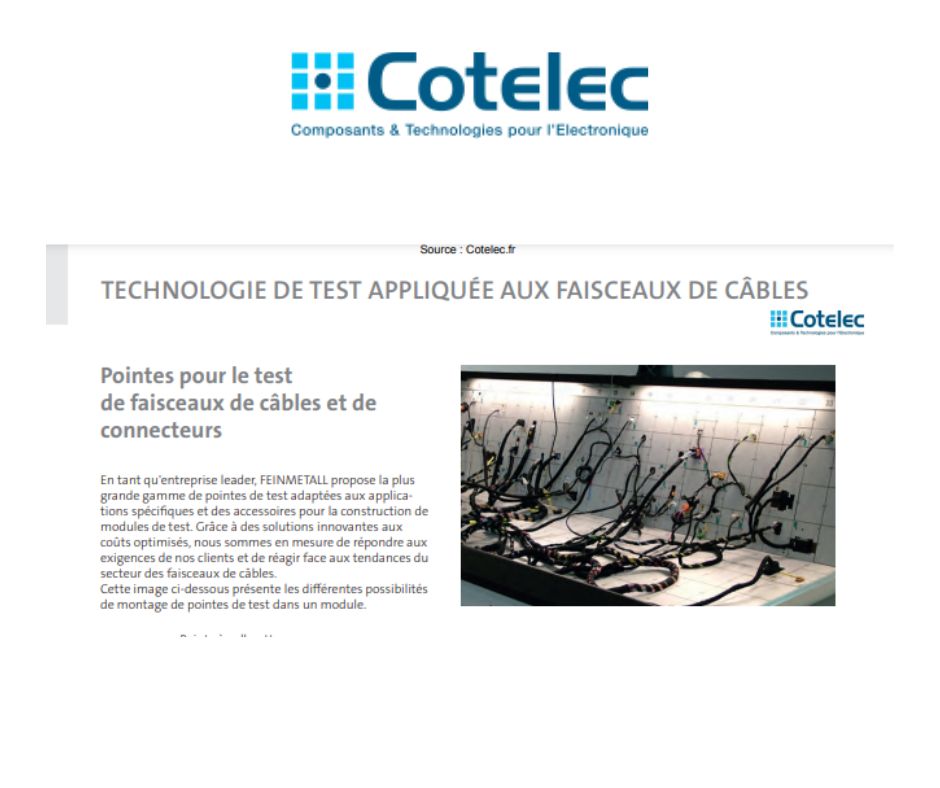A Kelvin probe consists of two measuring channels, which are independent and insulated from each other. The classical measuring method is based on an impressed current flowing through the test item and causing a resulting voltage. This is directly proportional to the resistance being measured. Because of I = constant and the very high internal resistance of the voltmeter, the lead and contact resistances are not included in the measurement.
Very high accuracies can be achieved with this measuring method. Contact is made by a pair of Kelvin probes, ideally very close to the test item. The specified constant current (force signal) usually flows through the outer conductor, while the voltage (sense signal) is measured with the inner conductor.
High current probes for contacting flat blade connectors
Due to the twist proof design the plunger can be moved to the test item well aligned. As soon as the plunger meets the blade and is pushed in, it makes a twist movement of up to 20°. Therefore it adapts to the surface and creates a line contact without causing any scratching or damaging of the DUT.
Interface Probes
The interface between test fi xture and test system is usually realized by interface probes which are specifi cally standardized for each test system.
Pneumatic Probes
For selective contacting of single test points or for contacting test points with limited access, it can be helpful to use pneumatic probes, operated by compressed air.

